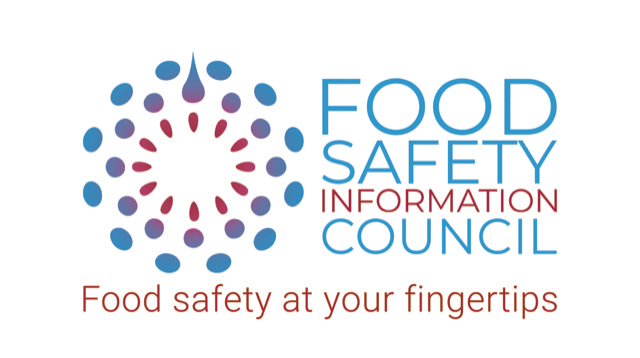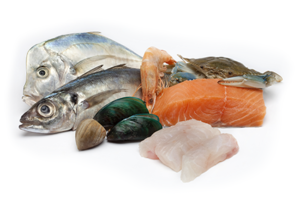Seafood, especially shellfish, has had bad food safety press in the past. However, Australia has a well-deserved reputation for high quality and safe seafood and commercially produced seafood sold in Australia must adhere to strict quality controls.
Do not consume shellfish you have harvested yourself unless you know the water it is grown in is safe. For example, not near sewage outlets or septic systems runoff. Check with the State or Territory authorities for banned fishing or shellfish harvesting areas or fishing seasons. If you catch your own fish ensure you consume it or refrigerate it as soon as possible. If you’ve been lucky enough to catch more than you can eat in a day or two, or have caught large fish, gut or fillet them and place in the freezer. These can then be defrosted and cooked later as needed. Fish fillets can be cooked to around 69°C or when flesh flakes easily.
If seafood is cooked most common food poisoning bacteria and viruses will be killed; however, cooking won’t remove all toxins and chemical pollutants in shellfish and fish. To avoid these risks, seafood should only be harvested from safe waters, chilled and stored correctly and purchased from licensed suppliers. There are additional risks if the seafood is consumed raw, for example raw oysters and raw fish used for sashimi. Precooked prawns, bugs or crabs can be contaminated by your hands when they are peeled or shelled. You will need to be particularly careful and hygienic in preparing these and don’t handle pre-cooked food if you have exposed infections on your hands or have gastro. Raw seafood including oysters aren’t recommended for people at risk like pregnant women, people with reduced immune systems, the elderly or young children.
Here are 6 tips to reduce your risk of food poisoning from seafood you purchase to help keep it safe:
- Only purchase your seafood from a registered seafood supplier and check it is visibly fresh and is displayed chilled
- Transport your seafood home from the retailer in a cooler with enough ice blocks or ice to keep it chilled
- Once home put seafood in the fridge in a covered container and make sure your fridge is running at 5°C or below. Live shellfish, such as oysters, should be kept on ice and consumed as soon as possible after shucking.
- If the seafood is going to be cooked this will kill most bacteria but there could be a slight risk if it is consumed raw, for example raw oysters, sushi, sashimi. You will need to be particularly careful and hygienic in preparing these raw foods and also handling pre-cooked seafood such as cooked prawns.
- Seafood eaten raw or cold cooked prawns are not recommended for pregnant women, people with reduced immune systems or the elderly because of the risk of Listeria.
- Consume prawns and live shellfish as soon as possible after purchase when they are at their best and use other refrigerated seafood within 2 to 3 days.
Natural toxins in fish
Escolar (Lepidocybium flavobrunneum) and oilfish (Ruvettus pretiosus) have been responsible for a number of food poisoning outbreaks involving a type of oily diarrhoea, called keriorrhoea. For example, investigation of some Australian outbreaks of oily diarrhoea suggest between 45 and 67 per cent of people may become ill after eating these fish species. There is probably a significant under-reporting of illness associated with the consumption of these fish as the symptoms can be mild and short-lived.The oily diarrhoea is caused by indigestible oil contained in these fish, which accumulates in the rectum before being expelled. Symptoms range from an oily orange or yellow discharge, to severe diarrhoea with nausea and vomiting. Other symptoms may include stomach cramps, loose bowel movements and headache. The symptoms can occur without warning, usually within 2 ½ hours of consumption, but range from 1 to 90 hours later. Unlike other forms of diarrhoea, the oily diarrhoea caused by these fish does not cause significant loss of body fluid and is not life-threatening. Symptoms may last for one or two days.
If you are pregnant, have a bowel problem or malabsorption, you are advised not to consume these fish. If you are eating these fish for the first time, consume only a small portion. If you experience gastrointestinal symptoms after eating this fish, do not consume this fish in future and seek medical advice if symptoms persist.
Fish: naturally occurring mercury. Fish is great for your health and everyone should eat two to three serves of fish a week for good health. However, some of the larger species of fish, such as shark, marlin and swordfish, have levels of naturally occurring mercury. These species can build up levels of mercury because they are predatory and eat smaller fish and they also live a long time absorbing mercury from the ocean.
The effects in babies exposed to high levels of mercury in the womb can include lower scores on tests that measure attention, learning and memory in their early years. Pregnant women, women planning pregnancy and young children shouldn’t eat shark, broadbill, marlin and swordfish more than once a fortnight, with no other fish eaten that fortnight. They also shouldn’t eat orange roughy (also sold as sea perch) and catfish, more than once a week, with no other fish eaten during that week.
The general population should eat only one serve per week of Shark (Flake) or Billfish (Swordfish / Broadbill and Marlin) and no other fish that week. Check the mercury in fish advice from Food Standards Australia New Zealand.
There are plenty of other types of fish to choose for your two to three serves a week. Check with your fish retailer about the type of fish you are buying or check the ingredient list on a package or can.
Ciguatera food poisoning is an unusual form of food poisoning most typically caused by larger and older fish that live in warm ocean waters. However smaller warm ocean water finfish may also be implicated. The poisoning is caused by people eating fish containing the ciguatera toxin. The contaminated fish have eaten smaller fish that eats the algae that shelters a tiny organism responsible for producing a toxin that causes ciguatera.
Within 24 hours symptoms emerge including numbness around the fingers, toes and mouth, a burning sensation when in contact with cold, joint pain, nausea, itchiness and for people with high sensitivity, breathing difficulties. Problems may be encountered with eating coral trout, spanish mackerel, reef cod, barracuda, emperor, groper, sturgeon, trevally and kingfish. Any warm water predatory fish over 6 kg should be treated with suspicion. Under no circumstances should the head, roe or liver be eaten, and it is wise to eat a small portion of any large fish to test for reactions 24 hours before serving. If you develop symptoms seek medical advice.
Scombroid or histamine poisoning is the result of inadequate temperature control of fish. It can occur when fish that has not been chilled to 4°C or below is eaten. The result is a high level of histamine building up in the fish flesh. Often misdiagnosed as an allergic reaction, symptoms vary but include:
- burning and tingling of the lips and mouth
- dizziness
- flushing of the face
- an itchy rash, often on the face, neck, chest and upper back
- sweating
- vomiting and diarrhoea
- headaches
- blurred vision
- palpitations.
In severe cases, and particularly in those suffering from asthma, bronchial difficulties can occur.
Usually not of major concern, deaths overseas have focused attention on Scombroid poisoning.

